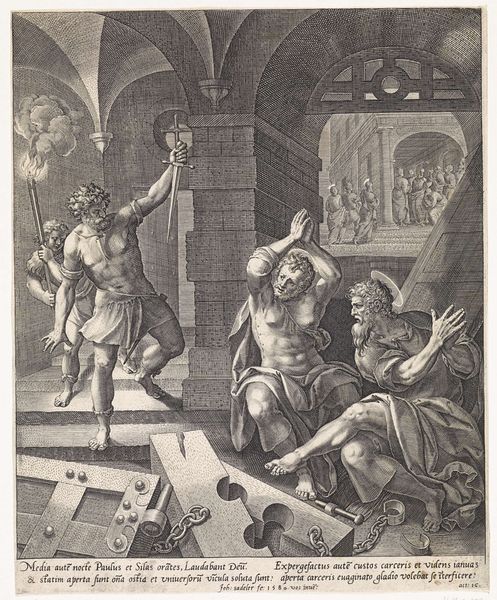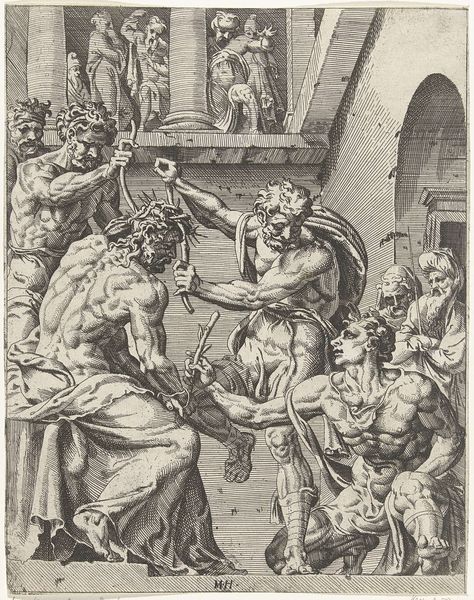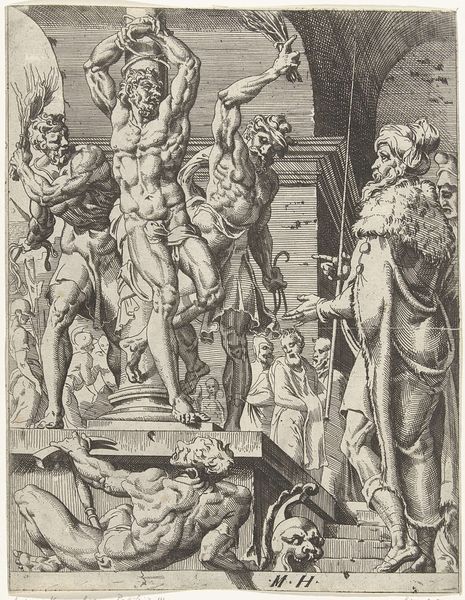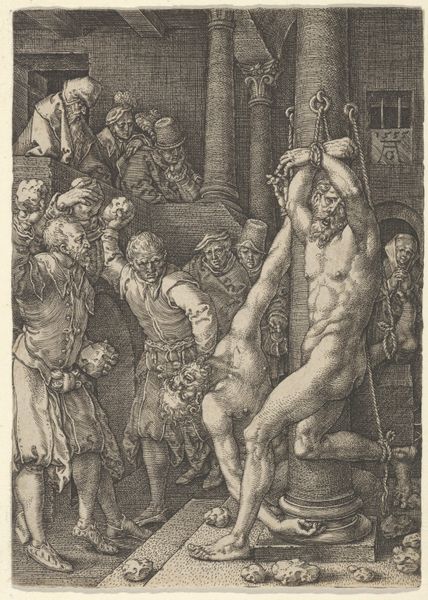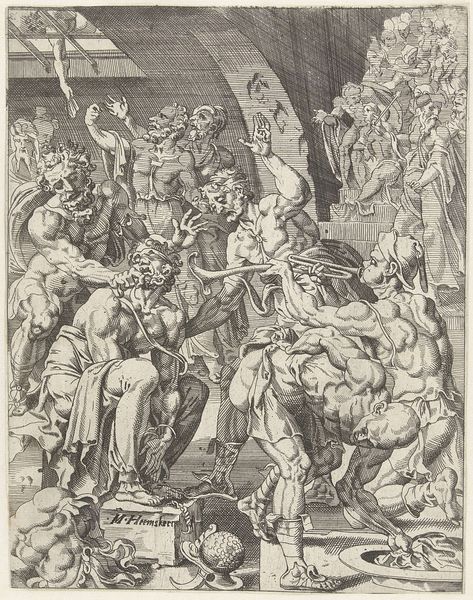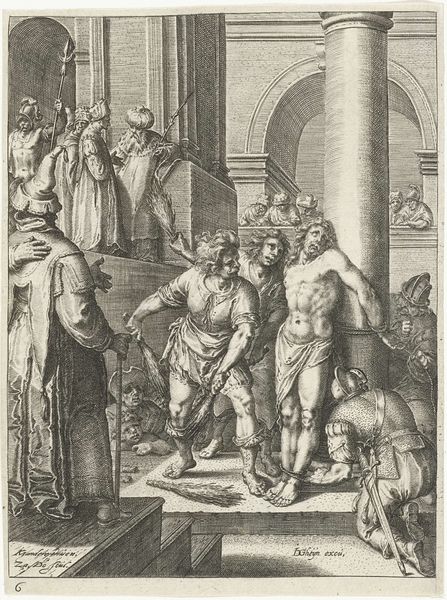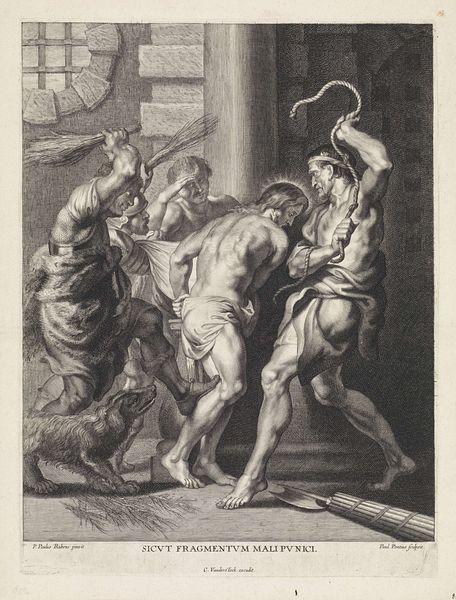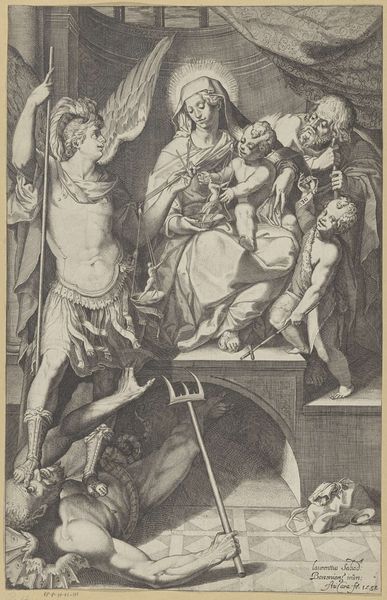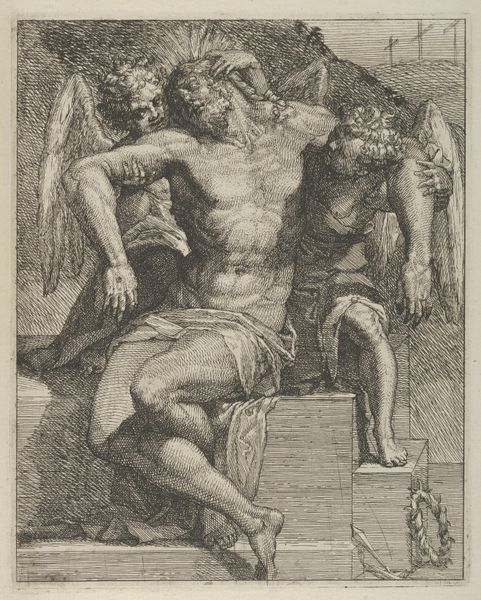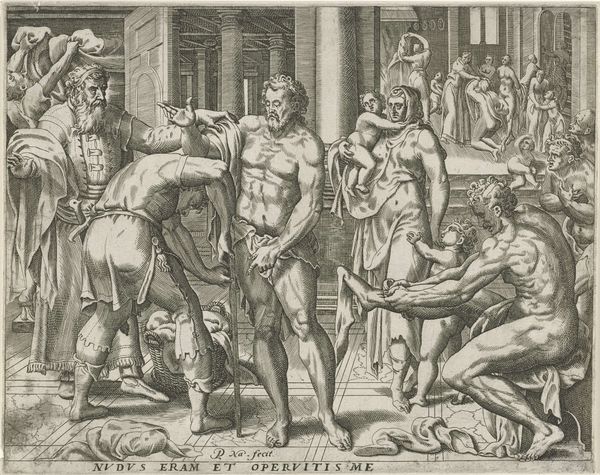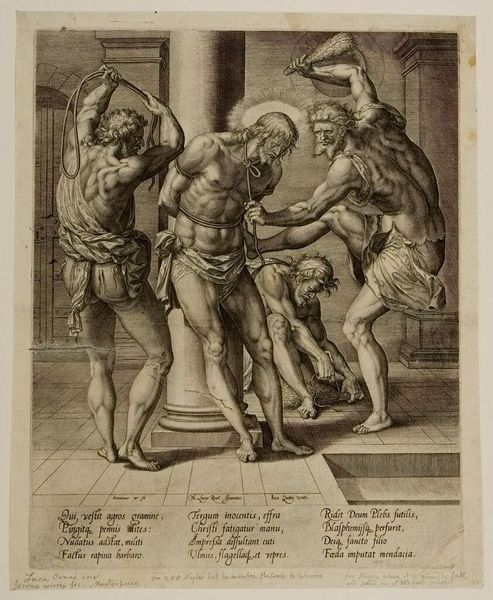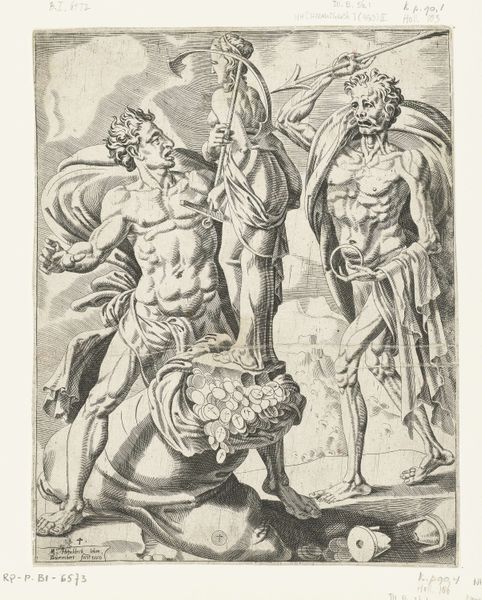
print, engraving
baroque
figuration
history-painting
engraving
Dimensions: height 452 mm, width 328 mm
Copyright: Rijks Museum: Open Domain
Editor: This engraving, "Geseling van Christus," dating from between 1623 and 1660 and attributed to Pieter de Bailliu, depicts the flagellation of Christ. What strikes me is the raw materiality of the scene, the textures of the stone, the whips, the flesh… how does this medium impact the message of the scene, in your opinion? Curator: Well, consider the labor involved in creating this print. The engraver painstakingly carved into the metal plate to produce this image of violence. The lines, rendered through immense effort, almost fetishize the instruments of torture. Are we not invited to contemplate the process and the physical means by which this story is made manifest, and its consumption enabled through reproducible prints? Editor: That's a really interesting point. The act of creating the image mirrors, in a way, the inflicting of pain depicted within it. The violence is inherent in the artistic creation itself. Curator: Precisely! Furthermore, where would this print circulate? Likely among a bourgeois class eager to consume religious narratives as luxury objects. Think of the socio-economic implications of this artistic production. The very tools that made the print allowed the maker of it, the owner of it, to disseminate a specific interpretation. Editor: So, it's not just about the religious narrative, but also about the economic and social structures that allow for its creation and consumption. The material object tells a broader story. What would this "mass production" mean to those unable to possess one of these artworks? Curator: It hints at a complex relationship between devotion, class, and material culture. In fact, prints played a significant role in fueling reformation-era iconoclasm! These images of divine pain became, in certain contexts, physical evidence of the power and exploitation within the Church. Editor: It is all deeply fascinating when we consider that, centuries after its creation, it generates new thoughts on production methods, readership, and social environment. I will not see the piece, or art in general, in the same way now! Curator: Yes, material realities shape how we perceive art and, ultimately, the world around us.
Comments
No comments
Be the first to comment and join the conversation on the ultimate creative platform.
